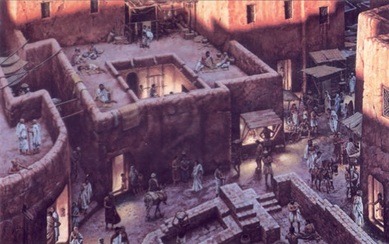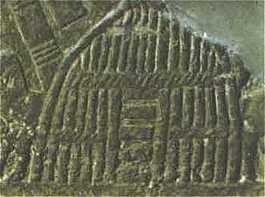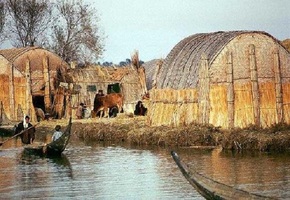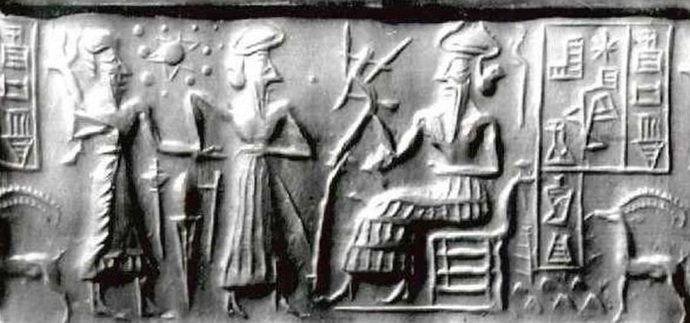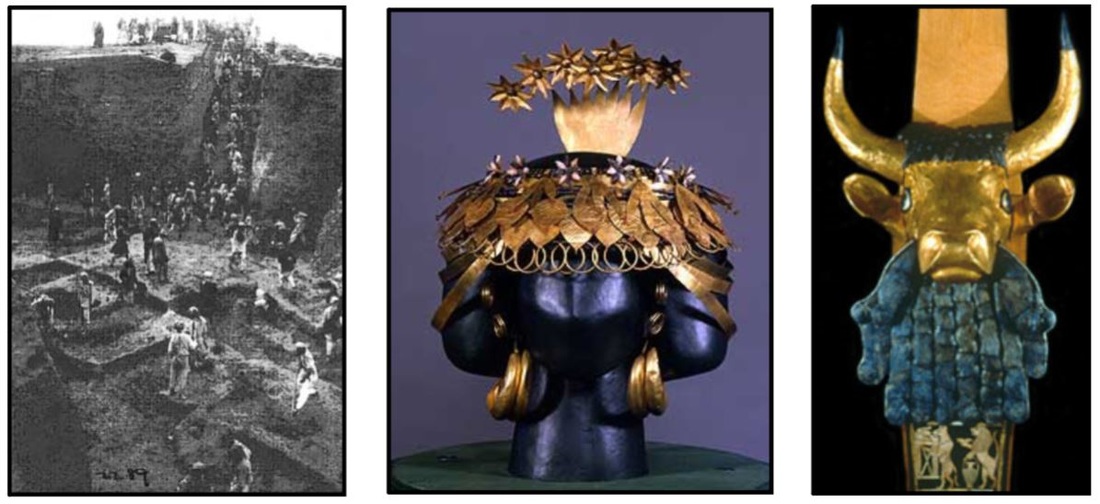Mesopotamia Sumerian City-States
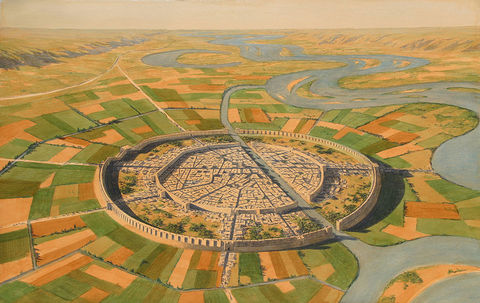
Essential Themes
2. Beliefs: Why do people live the way they do?
3. Government: How do humans organize their societies, and why do they organize them the way they do?
5. Conflict & Cooperation: How has warfare shaped human history?
7. Culture: How do we know what we know about human history?
2. Beliefs: Why do people live the way they do?
3. Government: How do humans organize their societies, and why do they organize them the way they do?
5. Conflict & Cooperation: How has warfare shaped human history?
7. Culture: How do we know what we know about human history?
What is a city-state?
Ancient Sumer - City-States: Sumer grew rapidly. Soon, there were hundreds of villages and towns, some with populations of only a few hundred and some with populations of 30,000 or more. Cities became the centers of trade, learning, and religion and offered people more opportunities than life in the country. By the year 2500 BCE, the total population in ancient Sumer was more than half a million people. About four out of five of those people lived in the cities, making Sumer the world’s first urban culture.
Ancient Sumer - City-States: Sumer grew rapidly. Soon, there were hundreds of villages and towns, some with populations of only a few hundred and some with populations of 30,000 or more. Cities became the centers of trade, learning, and religion and offered people more opportunities than life in the country. By the year 2500 BCE, the total population in ancient Sumer was more than half a million people. About four out of five of those people lived in the cities, making Sumer the world’s first urban culture.
To protect themselves, small towns attached themselves to big cities. This created a system of city-states. City-states are communities that include a city and its nearby farmland. The nearby land might include several smaller villages.
People in ancient Sumer worshiped the same gods. They spoke the same language. They freely sailed up and down the rivers, trading goods. They hired each other. They made agreements with each other. They knew each other. Each city had its own royal family and its own military.
People in ancient Sumer worshiped the same gods. They spoke the same language. They freely sailed up and down the rivers, trading goods. They hired each other. They made agreements with each other. They knew each other. Each city had its own royal family and its own military.
|
Because Sumerian cities grew gradually, they did not look like cities today. Instead of a grid of streets built at right angles, Sumerian city-states had narrow, winding streets. Each city was surrounded by a thick, protective wall made of mud bricks. Typically, rulers - first priests then, later, kings - merchants, and craftsmen lived within the city's walls. Farmers, however, tended to live outside the city's walls, nearer to the river and their crops.
|
Using the resources at hand, farmers built their homes out of reeds gathered from the river. Inside the city's walls, people built their homes out of mud bricks. In order to keep the heat out, the walls were several feet thick. A typical Sumerian city house consisted of a series of rooms built around a courtyard. The courtyard was usually covered with palm leaves placed over wooden beams. The loose layering of palm leaves both helped protect Mesopotamians from the sun and allowed cooking smoke to escape.
|
In each city, one building was likely to stand out from all the others. The largest and most important structure in a Sumerian city was the temple. It was called a ziggurat. The first ziggurats were built around 2200 BCE.
|
How did a ziggurat function like a modern city hall?
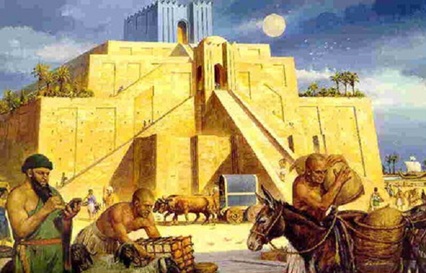 CLICK above to explore ancient ziggurats.
CLICK above to explore ancient ziggurats.
More than just a temple, the ziggurat was the center of city life. It functioned much like a city-hall does today. Because priests at the ziggurats ran the irrigation systems, if a person wanted access to river water to irrigate their crops, they went to the priests with grain and other items to pay for that service. Today, your parents pay a bill each month to keep city water flowing to your house in much the same way. As a result of the Sumerian's system, priests controlled the storage of surplus grain. Consequently, the priests often controlled much of a city's wealth and held great power in the city.
In addition to controlling irrigation and stored surpluses, priests also offered Mesopotamians advice on how to please the gods. Sumerians believed in many gods and goddesses. A belief in many gods and goddesses is called polytheism. Sumerians believed in four main gods and thousands of lesser gods. They believed their four main gods - the gods of sky, wind, foothills, and fresh water - created the world and ruled over it. Sumerians thought of their gods as rich landowners who created humans to work for them.
Why did leadership in Mesopotamia shift from priests to kings?
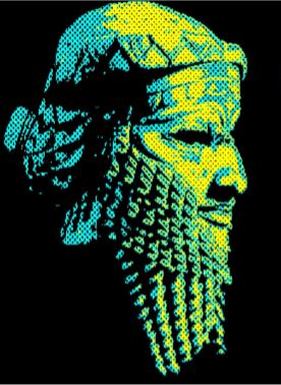
Rulers Arise: Life in Sumer had many dangers, including floods, droughts, and invasions. The people believed that the gods could prevent these disasters. To protect their cities, people tried to please their gods. To do so, they turned to their priests, who claimed to have special influence with the gods. Because of that claim, priests were accepted as leaders.
Eventually, however, as cities grew more and more wealthy, they were subject to more frequent raids. In such dangerous times, the people of a city-state turned to a powerful man to lead them in war. These powerful men were called Lugal-gals, or "big man." Over time, the Lugal-gals came to lead the city-states full time and took over many of the priests' jobs. Ultimately, these leaders came to be known as kings and the land they ruled was known as a kingdom. As kings, these men became the law givers. It is to those ancient law-givers or "Lugal-gals" that we trace the root of our word, "legal."
Eventually, however, as cities grew more and more wealthy, they were subject to more frequent raids. In such dangerous times, the people of a city-state turned to a powerful man to lead them in war. These powerful men were called Lugal-gals, or "big man." Over time, the Lugal-gals came to lead the city-states full time and took over many of the priests' jobs. Ultimately, these leaders came to be known as kings and the land they ruled was known as a kingdom. As kings, these men became the law givers. It is to those ancient law-givers or "Lugal-gals" that we trace the root of our word, "legal."
Ur: The capital of ancient Sumer was the city-state of Ur. Ur was also located on the Euphrates River to the south of Uruk. The river-trade kept the city well supplied with everything, including wealth. When the river changed its course, the city of Ur lost its wealth and its power.
How did Leonard Wooley identify the bodies in the Royal Tombs of Ur?
The Royal Tombs of Ur: A great deal of what we know about ancient Sumerian culture was only discovered within the last 100 years. While digging at the ancient Sumerian capital city of Ur, an archeologist named Leonard Wooley, made a fabulous discovery. He discovered a huge gravesite. The gravesite Wooley discovered held over 1400 bodies.
The graves contained ordinary items like pots and jugs, tools and trinkets. These discoveries told Wooley and his team a great deal about daily life in ancient Ur, but they did not explain why 1400 people would lay down and die in a grave.
The graves contained ordinary items like pots and jugs, tools and trinkets. These discoveries told Wooley and his team a great deal about daily life in ancient Ur, but they did not explain why 1400 people would lay down and die in a grave.
CLICK a picture above to explore the excavation of the Royal Tombs of Ur, see more of its treasures, and play the Royal Game of Ur.
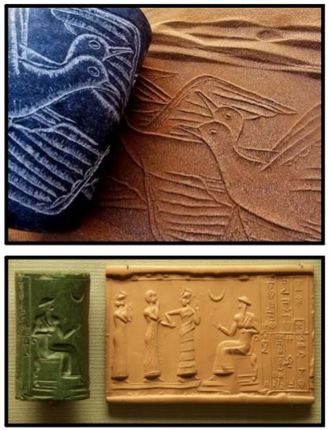 Cylinder seals served the same purpose as a personal stamp and could substitute for a signature.
Cylinder seals served the same purpose as a personal stamp and could substitute for a signature.
While Woolley and his team were exploring the grave, they discovered a collection of weapons made of precious gold and lapis lazuli. That was odd. Common people rarely owned such beautiful things. Then they noticed the floor. It was made of limestone.
There was no limestone nearby, so Wooley knew that the floor had to have been specially created. Upon closer inspection, Wooley and his team discovered that it wasn’t a floor at all. It was a flat roof. When they dug through the roof they found the Royal Tombs of Ur—the graves of royalty.
Inside the tomb, Wooley and his team found cylinder seals next to some of the bodies that helped to identify the royals by name. A cylinder seal is a small, round cylinder that is engraved with written characters or scenes or both. When rolled in wet clay, cylinder seals leave an impression of the words or scenes engraved on the cylinder. For the Mesopotamians, cylinder seals served the same purpose as a personal stamp and could substitute for a signature. Inside the tombs, the team found rings and necklaces and earrings and a headdress made of gold. They also found the bodies of soldiers and ladies in waiting. It appears that at least once in history, when royalty died, so did their attendants.
Wooley's discovery of the Royal Tombs of Ur in 1922 told archaeologists a great deal about ancient Sumerian daily life
There was no limestone nearby, so Wooley knew that the floor had to have been specially created. Upon closer inspection, Wooley and his team discovered that it wasn’t a floor at all. It was a flat roof. When they dug through the roof they found the Royal Tombs of Ur—the graves of royalty.
Inside the tomb, Wooley and his team found cylinder seals next to some of the bodies that helped to identify the royals by name. A cylinder seal is a small, round cylinder that is engraved with written characters or scenes or both. When rolled in wet clay, cylinder seals leave an impression of the words or scenes engraved on the cylinder. For the Mesopotamians, cylinder seals served the same purpose as a personal stamp and could substitute for a signature. Inside the tombs, the team found rings and necklaces and earrings and a headdress made of gold. They also found the bodies of soldiers and ladies in waiting. It appears that at least once in history, when royalty died, so did their attendants.
Wooley's discovery of the Royal Tombs of Ur in 1922 told archaeologists a great deal about ancient Sumerian daily life


